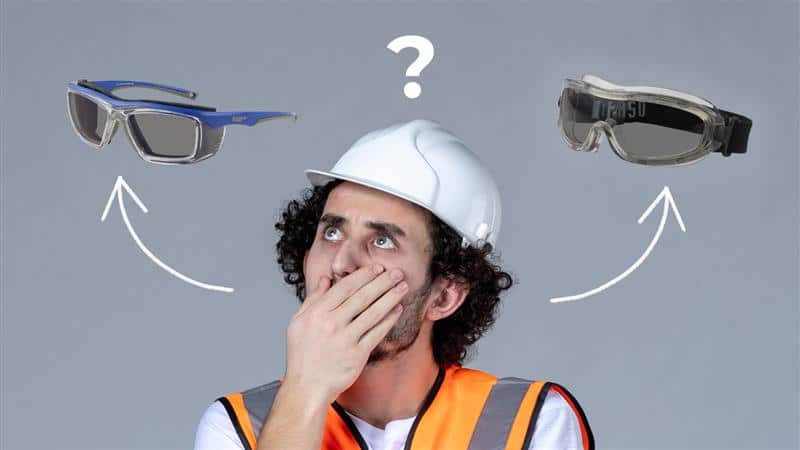Choosing the right safety glasses is crucial to ensure proper protection and comfort. Here are some key factors to consider when selecting safety glasses:

1. Standards and Certification
- ANSI Z87.1: In the U.S., ensure the glasses meet the ANSI Z87.1 standard, which sets the criteria for impact resistance, coverage, and optical clarity.
- EN166: In Europe, look for glasses that meet the EN166 standard for personal eye protection.
2. Lens Material
- Polycarbonate: Lightweight and highly impact-resistant, ideal for most safety applications.
- Trivex: Offers similar impact resistance to polycarbonate but with better optical clarity and less distortion.
- Glass: Scratch-resistant and provides excellent optical clarity but is heavier and less impact-resistant.
3. Lens Coatings
- Anti-scratch: Increases the durability of the lenses.
- Anti-fog: Essential for environments where temperature fluctuations can cause fogging.
- UV Protection: Crucial for outdoor work to protect against harmful UV rays.
4. Lens Tint
- Clear: Best for general indoor use.
- Gray: Reduces glare and brightness, suitable for outdoor work.
- Amber/Yellow: Enhances contrast and depth perception, good for low-light conditions.
- Mirror/Polarized: Reduces glare significantly, ideal for bright environments.
5. Fit and Comfort
- Adjustable Nose Pads and Temples: Ensure a snug fit and prevent slippage.
- Wraparound Design: Offers better side protection and peripheral vision.
- Foam Gaskets: Provide additional protection from dust and debris, especially in windy environments.
6. Durability and Maintenance
- Choose glasses that are durable and easy to clean.
- Consider replaceable lenses if the frame is durable and can be reused.
7. Special Features
- Prescription Lenses: If you wear glasses, consider prescription safety glasses or over-the-glass (OTG) models.
- Photochromic Lenses: Automatically darken in response to sunlight, useful for transitioning between indoor and outdoor environments.
8. Type of Work and Environment
- Industrial Settings: Prioritize high-impact resistance and comprehensive coverage.
- Laboratories: Chemical splash protection might be necessary.
- Construction Sites: Enhanced durability and UV protection are important.
9. Cost
- Balance cost with the level of protection and comfort. Sometimes investing in higher-quality glasses can save costs in the long run by preventing injuries and lasting longer.
10. Brand and Reviews
- Consider reputable brands known for quality and safety.
- Read reviews and ratings from other users to get insights into comfort and durability.
Key Recommendations
- Match glasses to specific hazards (impact/chemical/radiation).
- Prioritize certified products (ANSI Z87.1/EN 166).
- For welding/UV, select filtered lenses with appropriate shade ratings.

